HSBC 2006 Annual Report Download - page 215
Download and view the complete annual report
Please find page 215 of the 2006 HSBC annual report below. You can navigate through the pages in the report by either clicking on the pages listed below, or by using the keyword search tool below to find specific information within the annual report.-
 1
1 -
 2
2 -
 3
3 -
 4
4 -
 5
5 -
 6
6 -
 7
7 -
 8
8 -
 9
9 -
 10
10 -
 11
11 -
 12
12 -
 13
13 -
 14
14 -
 15
15 -
 16
16 -
 17
17 -
 18
18 -
 19
19 -
 20
20 -
 21
21 -
 22
22 -
 23
23 -
 24
24 -
 25
25 -
 26
26 -
 27
27 -
 28
28 -
 29
29 -
 30
30 -
 31
31 -
 32
32 -
 33
33 -
 34
34 -
 35
35 -
 36
36 -
 37
37 -
 38
38 -
 39
39 -
 40
40 -
 41
41 -
 42
42 -
 43
43 -
 44
44 -
 45
45 -
 46
46 -
 47
47 -
 48
48 -
 49
49 -
 50
50 -
 51
51 -
 52
52 -
 53
53 -
 54
54 -
 55
55 -
 56
56 -
 57
57 -
 58
58 -
 59
59 -
 60
60 -
 61
61 -
 62
62 -
 63
63 -
 64
64 -
 65
65 -
 66
66 -
 67
67 -
 68
68 -
 69
69 -
 70
70 -
 71
71 -
 72
72 -
 73
73 -
 74
74 -
 75
75 -
 76
76 -
 77
77 -
 78
78 -
 79
79 -
 80
80 -
 81
81 -
 82
82 -
 83
83 -
 84
84 -
 85
85 -
 86
86 -
 87
87 -
 88
88 -
 89
89 -
 90
90 -
 91
91 -
 92
92 -
 93
93 -
 94
94 -
 95
95 -
 96
96 -
 97
97 -
 98
98 -
 99
99 -
 100
100 -
 101
101 -
 102
102 -
 103
103 -
 104
104 -
 105
105 -
 106
106 -
 107
107 -
 108
108 -
 109
109 -
 110
110 -
 111
111 -
 112
112 -
 113
113 -
 114
114 -
 115
115 -
 116
116 -
 117
117 -
 118
118 -
 119
119 -
 120
120 -
 121
121 -
 122
122 -
 123
123 -
 124
124 -
 125
125 -
 126
126 -
 127
127 -
 128
128 -
 129
129 -
 130
130 -
 131
131 -
 132
132 -
 133
133 -
 134
134 -
 135
135 -
 136
136 -
 137
137 -
 138
138 -
 139
139 -
 140
140 -
 141
141 -
 142
142 -
 143
143 -
 144
144 -
 145
145 -
 146
146 -
 147
147 -
 148
148 -
 149
149 -
 150
150 -
 151
151 -
 152
152 -
 153
153 -
 154
154 -
 155
155 -
 156
156 -
 157
157 -
 158
158 -
 159
159 -
 160
160 -
 161
161 -
 162
162 -
 163
163 -
 164
164 -
 165
165 -
 166
166 -
 167
167 -
 168
168 -
 169
169 -
 170
170 -
 171
171 -
 172
172 -
 173
173 -
 174
174 -
 175
175 -
 176
176 -
 177
177 -
 178
178 -
 179
179 -
 180
180 -
 181
181 -
 182
182 -
 183
183 -
 184
184 -
 185
185 -
 186
186 -
 187
187 -
 188
188 -
 189
189 -
 190
190 -
 191
191 -
 192
192 -
 193
193 -
 194
194 -
 195
195 -
 196
196 -
 197
197 -
 198
198 -
 199
199 -
 200
200 -
 201
201 -
 202
202 -
 203
203 -
 204
204 -
 205
205 -
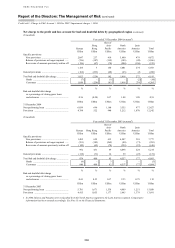 206
206 -
 207
207 -
 208
208 -
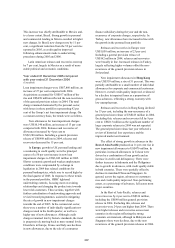 209
209 -
 210
210 -
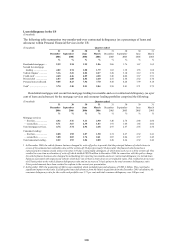 211
211 -
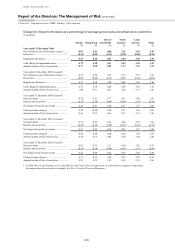 212
212 -
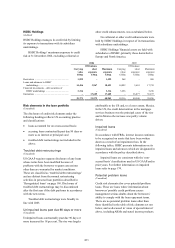 213
213 -
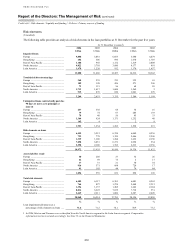 214
214 -
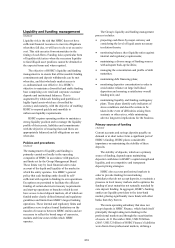 215
215 -
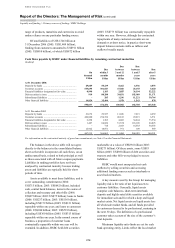 216
216 -
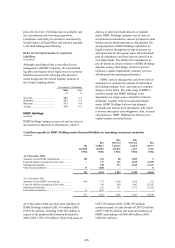 217
217 -
 218
218 -
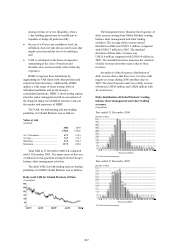 219
219 -
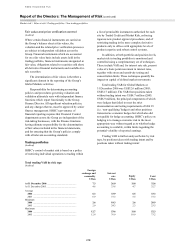 220
220 -
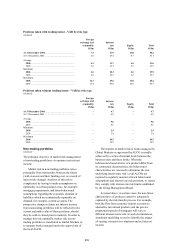 221
221 -
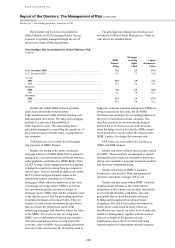 222
222 -
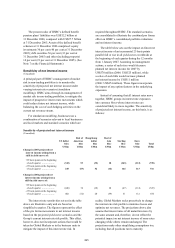 223
223 -
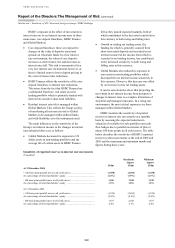 224
224 -
 225
225 -
 226
226 -
 227
227 -
 228
228 -
 229
229 -
 230
230 -
 231
231 -
 232
232 -
 233
233 -
 234
234 -
 235
235 -
 236
236 -
 237
237 -
 238
238 -
 239
239 -
 240
240 -
 241
241 -
 242
242 -
 243
243 -
 244
244 -
 245
245 -
 246
246 -
 247
247 -
 248
248 -
 249
249 -
 250
250 -
 251
251 -
 252
252 -
 253
253 -
 254
254 -
 255
255 -
 256
256 -
 257
257 -
 258
258 -
 259
259 -
 260
260 -
 261
261 -
 262
262 -
 263
263 -
 264
264 -
 265
265 -
 266
266 -
 267
267 -
 268
268 -
 269
269 -
 270
270 -
 271
271 -
 272
272 -
 273
273 -
 274
274 -
 275
275 -
 276
276 -
 277
277 -
 278
278 -
 279
279 -
 280
280 -
 281
281 -
 282
282 -
 283
283 -
 284
284 -
 285
285 -
 286
286 -
 287
287 -
 288
288 -
 289
289 -
 290
290 -
 291
291 -
 292
292 -
 293
293 -
 294
294 -
 295
295 -
 296
296 -
 297
297 -
 298
298 -
 299
299 -
 300
300 -
 301
301 -
 302
302 -
 303
303 -
 304
304 -
 305
305 -
 306
306 -
 307
307 -
 308
308 -
 309
309 -
 310
310 -
 311
311 -
 312
312 -
 313
313 -
 314
314 -
 315
315 -
 316
316 -
 317
317 -
 318
318 -
 319
319 -
 320
320 -
 321
321 -
 322
322 -
 323
323 -
 324
324 -
 325
325 -
 326
326 -
 327
327 -
 328
328 -
 329
329 -
 330
330 -
 331
331 -
 332
332 -
 333
333 -
 334
334 -
 335
335 -
 336
336 -
 337
337 -
 338
338 -
 339
339 -
 340
340 -
 341
341 -
 342
342 -
 343
343 -
 344
344 -
 345
345 -
 346
346 -
 347
347 -
 348
348 -
 349
349 -
 350
350 -
 351
351 -
 352
352 -
 353
353 -
 354
354 -
 355
355 -
 356
356 -
 357
357 -
 358
358 -
 359
359 -
 360
360 -
 361
361 -
 362
362 -
 363
363 -
 364
364 -
 365
365 -
 366
366 -
 367
367 -
 368
368 -
 369
369 -
 370
370 -
 371
371 -
 372
372 -
 373
373 -
 374
374 -
 375
375 -
 376
376 -
 377
377 -
 378
378 -
 379
379 -
 380
380 -
 381
381 -
 382
382 -
 383
383 -
 384
384 -
 385
385 -
 386
386 -
 387
387 -
 388
388 -
 389
389 -
 390
390 -
 391
391 -
 392
392 -
 393
393 -
 394
394 -
 395
395 -
 396
396 -
 397
397 -
 398
398 -
 399
399 -
 400
400 -
 401
401 -
 402
402 -
 403
403 -
 404
404 -
 405
405 -
 406
406 -
 407
407 -
 408
408 -
 409
409 -
 410
410 -
 411
411 -
 412
412 -
 413
413 -
 414
414 -
 415
415 -
 416
416 -
 417
417 -
 418
418 -
 419
419 -
 420
420 -
 421
421 -
 422
422 -
 423
423 -
 424
424 -
 425
425 -
 426
426 -
 427
427 -
 428
428 -
 429
429 -
 430
430 -
 431
431 -
 432
432 -
 433
433 -
 434
434 -
 435
435 -
 436
436 -
 437
437 -
 438
438 -
 439
439 -
 440
440 -
 441
441 -
 442
442 -
 443
443 -
 444
444 -
 445
445 -
 446
446 -
 447
447 -
 448
448 -
 449
449 -
 450
450 -
 451
451 -
 452
452 -
 453
453 -
 454
454 -
 455
455 -
 456
456 -
 457
457 -
 458
458
 |
 |

213
Liquidity and funding management
(Audited)
Liquidity risk is the risk that HSBC does not have
sufficient financial resources to meet its obligations
when they fall due, or will have to do so at excessive
cost. This risk can arise from mismatches in the
timing of cash flows. Funding risk (a particular form
of liquidity risk) arises when the necessary liquidity
to fund illiquid asset positions cannot be obtained at
the expected terms and when required.
The objective of HSBC’s liquidity and funding
management is to ensure that all foreseeable funding
commitments and deposit withdrawals can be met
when due, and that wholesale market access is
co-ordinated and cost effective. It is HSBC’s
objective to maintain a diversified and stable funding
base comprising core retail and corporate customer
deposits and institutional balances. This is
augmented by wholesale funding and portfolios of
highly liquid assets which are diversified by
currency and maturity, with the objective of enabling
HSBC to respond quickly and smoothly to
unforeseen liquidity requirements.
HSBC requires operating entities to maintain a
strong liquidity position and to manage the liquidity
profile of their assets, liabilities and commitments
with the objective of ensuring that cash flows are
appropriately balanced and all obligations are met
when due.
Policies and procedures
(Audited)
The management of liquidity and funding is
primarily carried out locally in the operating
companies of HSBC in accordance with practices
and limits set by the Group Management Board.
These limits vary by local financial unit to take
account of the depth and liquidity of the market in
which the entity operates. It is HSBC’s general
policy that each banking entity should be self-
sufficient with regards to funding its own operations.
Exceptions are permitted to facilitate the efficient
funding of certain short-term treasury requirements
and start-up operations or branches which do not
have access to local deposit markets, all of which are
funded under clearly defined internal and regulatory
guidelines and limits from HSBC’s largest banking
operations. These internal and regulatory limits and
guidelines serve to place formal limitations on the
transfer of resources between HSBC entities and are
necessary to reflect the broad range of currencies,
markets and time zones within which HSBC
operates.
The Group’s liquidity and funding management
process includes:
• projecting cash flows by major currency and
considering the level of liquid assets necessary
in relation thereto;
• monitoring balance sheet liquidity ratios against
internal and regulatory requirements;
• maintaining a diverse range of funding sources
with adequate back-up facilities;
• managing the concentration and profile of debt
maturities;
• maintaining debt financing plans;
• monitoring depositor concentration in order to
avoid undue reliance on large individual
depositors and ensuring a satisfactory overall
funding mix; and
• maintaining liquidity and funding contingency
plans. These plans identify early indicators of
stress conditions and describe actions to be
taken in the event of difficulties arising from
systemic or other crises, while minimising
adverse long-term implications for the business.
Primary sources of funding
(Audited)
Current accounts and savings deposits payable on
demand or at short notice form a significant part of
HSBC’s funding. HSBC places considerable
importance on maintaining the stability of these
deposits.
The stability of deposits, which are a primary
source of funding, depends upon maintaining
depositor confidence in HSBC’s capital strength and
liquidity, and on competitive and transparent
deposit-pricing strategies.
HSBC also accesses professional markets in
order to provide funding for non-banking
subsidiaries that do not accept deposits, to maintain a
presence in local money markets and to optimise the
funding of asset maturities not naturally matched by
core deposit funding. In aggregate, HSBC’s banking
entities are liquidity providers to the inter-bank
market, placing significantly more funds with other
banks than they borrow.
The main operating subsidiary that does not
accept deposits is HSBC Finance, which funds itself
principally through taking term funding in the
professional markets and through the securitisation
of assets. At 31 December 2006, US$150 billion
(2005: US$132 billion) of HSBC Finance’s liabilities
were drawn from professional markets, utilising a
